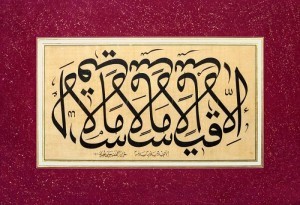
The Arabian Peninsula is the lands where Islam was born and grew. Arabic script is based on Nabati script, which is a descendant of Arami. The very command of Islam is “to read”, and this necessitates to save texts to read. Thus, writing has been developed in parallel with this. Writing in the East is what painting means to the West. It has even greater importance than painting in the Western world. In this context, writing is something sacred and artistic, as well as being a part of daily life.
The writing style used in the first Qur’ans is Kûfî, which is known with its cornered form. Later on, six main writing types emerged, as “aklâm-ı sitte” (six pens). These are Muhakkak, Reyhânî, Sülüs, Nesih, Tevkî, Rik’a. The other developed writing types by the time are Ta’lik, Divanî, Türk Rik’ası, Siyakat.
In the 10th century, Ibn Mukle made the first reforms in the art of Khatt. Ibn Hilal improved this writing. But the greatest move was done by Yakut Mustasimî, by finding “nesta’lik” khatt. The writing style which is both functional and aesthetic developed in the era of Anatolian Seljuks, despite it was born out of Arab environment, and hit the peak among the classical arts in Ottoman times. This is mainly thanks to supports given by II Mehmed and II Bayezid.
The art of Ottoman khatt showed little change at the beginning, but one important reform was made by Sheikh Hamdullah, who brought a novelty to the writing. The other master of the era was Ahmed Karahisari. In the 17th century, the style of Hafız Osman become prominent. His special arrangement for the “hilye” (texts which describe the physical characteristics and ethics of the prophet) had become a scheme in the art of khatt. Turkish style and new writing styles improved even more in the 18th and 19th century. Not just handwritings, but khatt plaques, hilye designs, khatt murakka’s (albums) were prepared as well. The art of khatt has been carried with traditional methods.




